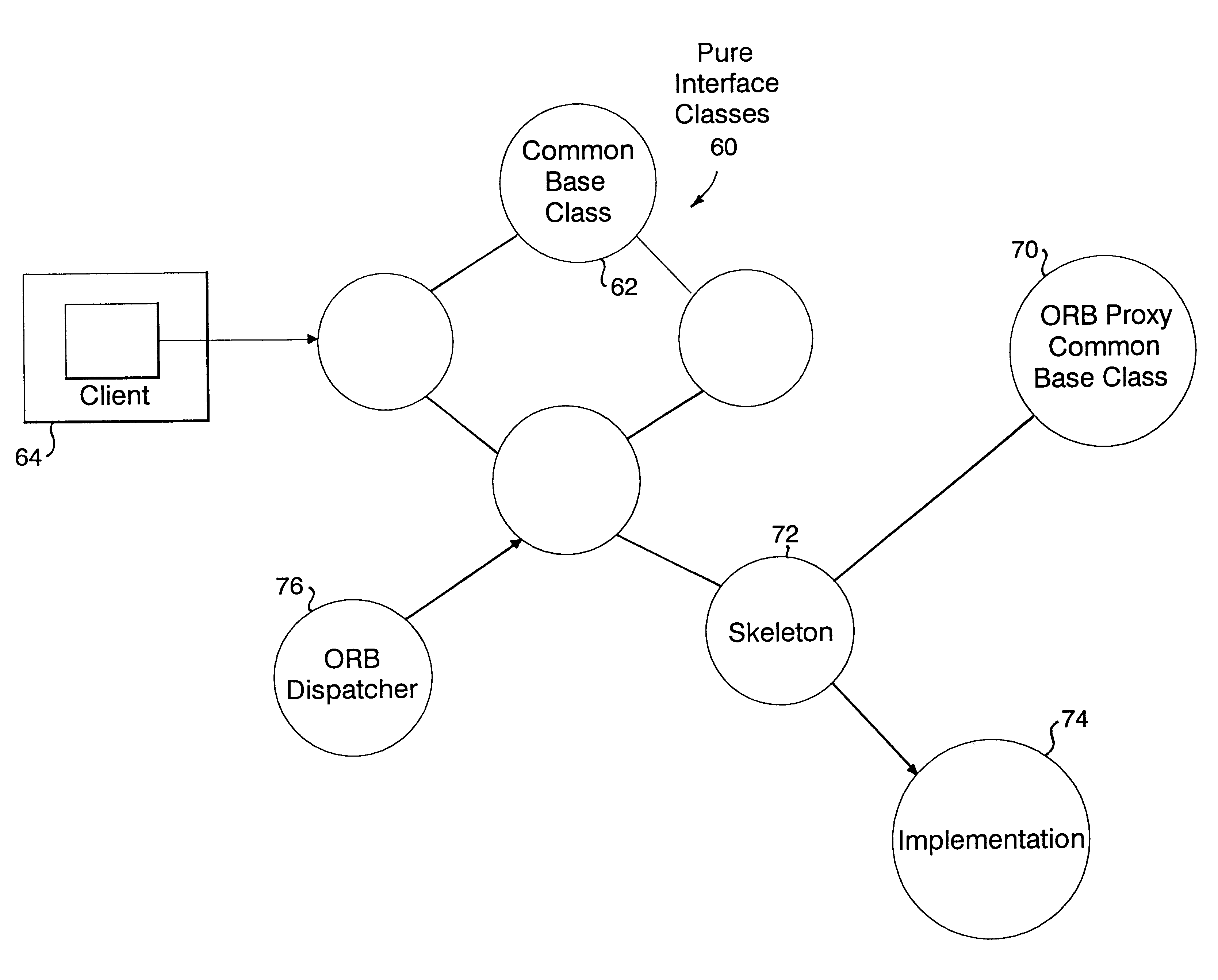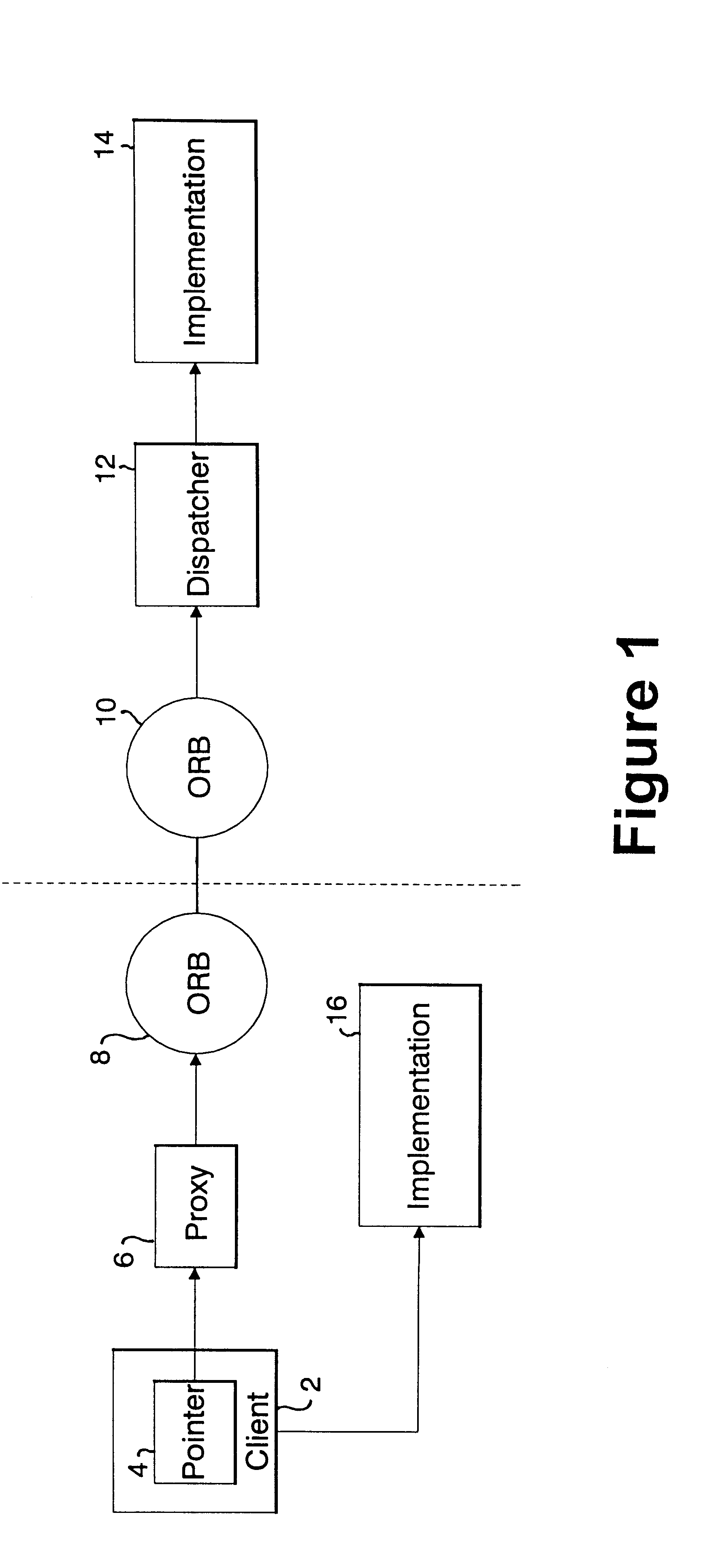Uniform access to and interchange between objects employing a plurality of access methods
a plurality of access methods and access methods technology, applied in the field of multilanguage, distributed programming environment, can solve problems such as the drawbacks of specific oo programming language use, the lack of inherent concurrency of c++, and the hierarchies of nested computer programs or procedures
- Summary
- Abstract
- Description
- Claims
- Application Information
AI Technical Summary
Benefits of technology
Problems solved by technology
Method used
Image
Examples
case b
le C++ SOM proxy 112 and Java SOM dispatcher 116 shall be used whenever a C++ client 110 and a Java implementation 118 are local to one another. A language-independent SOMRef 114 is passed across the language environments.
Case C: A single C++ ORB Proxy 122 pointing to an ORB 124 shall be used when the client 120 is C++ and the implementation is remote.
case d
em composition of a Java SOM proxy 132, C++ SOM dispatcher 136, and C++ ORB proxy 138 shall be used when the client 130 is Java and the implementation is remote. A language-independent SOMRef 134 is again passed across the languages.
Case E: A single Java SOM proxy 142 and C++ SOM dispatcher 146 (through SOMRef 144) shall be used whenever a Java client 140 and a C++ implementation 148 are local to one another.
FIG. 5 schematically illustrates the C++ class inheritance structure pursuant to the present invention which satisfies these requirements. A set of interface classes 180 is generated from IDL describing the interfaces desired by the user. These generated interface classes inherit from the common interface base class 182, which in the preferred embodiment is the CORBA::Object class. In this class are introduced instance data and methods that are common to all proxies and implementations. In particular, the instance datum "m_somref" 184 is introduced here, as are the methods "_SOM...
PUM
 Login to View More
Login to View More Abstract
Description
Claims
Application Information
 Login to View More
Login to View More - R&D
- Intellectual Property
- Life Sciences
- Materials
- Tech Scout
- Unparalleled Data Quality
- Higher Quality Content
- 60% Fewer Hallucinations
Browse by: Latest US Patents, China's latest patents, Technical Efficacy Thesaurus, Application Domain, Technology Topic, Popular Technical Reports.
© 2025 PatSnap. All rights reserved.Legal|Privacy policy|Modern Slavery Act Transparency Statement|Sitemap|About US| Contact US: help@patsnap.com



